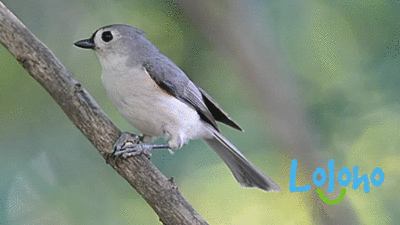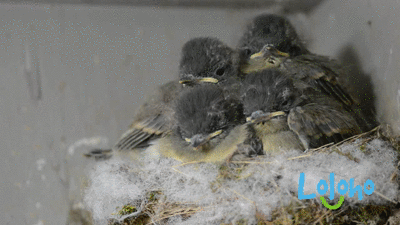Maybe I am just getting old. In the past, a proper “wildlife” viewing needed to include claws, horns, antlers, or tusks. Yes, when we ponder wildlife viewing, our thoughts might first go to wild moose in the Grand Tetons, the famous bison herds of Yellowstone, or grizzly bears in Glacier National Park. But what about wild birds… in your own backyard?
Lately I’ve found myself fascinated by these little modern day dinosaurs that visit via the air. Along these lines, one of the best “bang for the buck” wildlife viewing tools we’ve found is this seed ball wild bird feeder. This little gadget delivers an awful lot of entertainment for a rather modest expense.
Don’t underestimate the fun that can be had with local birds, wherever your locality may be. A bird feeder will bring in birds of many different varieties. You’ll soon get to know the regulars, and it’s always a delight to see a new visitor.
Birdwatching makes for a wonderful lifetime hobby. It’s a joy for kids and for their grandparents. And for middle aged shutterbugs like me. One of my goals is to continually attract new types of birds to our feeders, and to learn about new species.
The great thing about birdwatching is that you can do it just about anywhere. A quality bird feeder works in a campground, or in your backyard. Plus, some bird feeders are small and portable, and easily stored in an RV.
Birdwatching is a fairly cheap hobby. Sure, you need to budget for food (typically seed and suet) but those items can be purchased in bulk. For example, you can buy a 20-pound bag of black oil sunflower seeds for less than $20. Twenty pounds of seed will last quite a long while.
As for feeders, there are a variety of choices. Different feeders are appropriate for different birds. When you consider the daily entertainment and educational value provided by birdwatching, it makes sense to own some well designed and well built feeders
This brings me to the seed ball wild bird feeder. Quite simply, this ball works great with smaller songbirds like titmice, nuthatches, and cardinals. The seed munching birds love it. Larger woodpeckers also love it. (Hey, if someone was distributing the equivalent of free steak and lobster in your neighborhood, wouldn’t you like it too?)
The seed ball is exactly what it looks like – a metal mesh ball that serves as storage for food. Birds land on the ball and pull out food.
First and foremost, we use black oil sunflower seeds in our seed ball. The seeds are small enough to pass through the ball mesh, but large enough not to spill out.
The build quality of this product is pretty good. We like the full metal construction. The ball sphere itself feels solid and sturdy (and yes, ours survived a lengthy drop from the tree to the ground).
The metal support chain is on the flimsy side. It gets the job done, but a thicker more robust chain might do more to confound squirrels and raccoons.
And what about squirrels? Those crafty mammals delight in bird feeders, too. At times I feel like the Bill Murray character in Caddyshack, matching wits against a furry mammal (and often losing the battle).
So far, we haven’t had much problem with squirrels and this feeder. One of our techniques, however, is to bring the feeder indoors once the sun sets. We have a few curious raccoons in our area, and once the sun goes down they like to stir up trouble.
Overall this ball feeder is a winner. For the money, it delivers loads of entertainment. Click here to get your own ball feeder.
In addition to a ball seed bird feeder, if you have the storage space it makes sense to own a platform feeder like the Going Green Platform Bird Feeder.
Why own a platform feeder? Quite simply, it will attract more birds, and different varieties of birds. We have both types of feeder hanging in the same tree.
A platform feeder allows you to use different kinds of feed beyond seeds. We stock ours with mealworms in addition to black oil sunflower seeds.
In my experience, woodpeckers love suet cakes and nuggets (http://goo.gl/z6VVtc).
Cardinals, titmice, and nuthatches love black oil sunflower seeds. Bluebirds love mealworms.
So what else makes the Going Green Platform Feeder worth owning?
First of all, it’s built to last. It’s constructed from a rugged recycled plastic. The frame is screwed together and seems pretty much impervious to the impact of weather. The floor of the feeder is made of powder-coated metal mesh, which will allow rainfall to easily pass through rather than to collect inside.
The cables and hanging hook are of similar tough build quality.
What’s not to like? Well, not much. I suppose the feeder could be a little larger, but personally I think the size is just about right. Our neighborhood birds sure seem to like it.
What about the neighborhood mammals? Well, frankly, this is a problem. It ain’t exactly squirrel proof. (For that matter, I’m not sure that Fort Knox is squirrel proof.)
Squirrels are more of a problem with this platform feeder. The key is to hang the feeder in a place that’s difficult for squirrels to reach. You might also consider greasing a few limbs with WD-40 (and no I’m not kidding). Our solution is to place our feeders indoors at the end of the day.
Click here to get your own Going Green Platform Bird Feeder.
We already mentioned the black oil sunflower seeds as food. One of the best methods of attracting woodpeckers is to use Peanut Suet Nuggets, which happen to be perfectly sized for use in the Bird Feeder Seed Ball.
Woodpeckers love suet, which is raw beef or mutton fat. Suet is typically delivered in cake form. It’s sometimes used for cooking (Taco Bell, anyone?), but woodpeckers like it just the way it is.
Suet is also particularly attractive to nuthatches, chickadees, jays, and starlings. Wrens, creepers, kinglets, and even cardinals and some warblers occasionally visit suet feeders.
Many birds love animal fat because it’s easily digested and metabolized. Of course fat is a high-energy food. Fat contains massive amounts of energy (I should know – I’m storing large quantities of “energy” around my midsection).
Recently, someone had the genius idea of combining suet with ground peanuts. This allows the fatty substance to be delivered in the form of small nuggets. Brilliant!
I’m here to report that the peanut suet nuggets not only smell great (like aromatic peanut butter) they also work like woodpecker crack. Woodpeckers go crazy for this stuff.
We placed a layer of suet nuggets inside our seed ball bird feeder. The results were almost instantaneous. Several local woodpeckers descended on the sphere. In fact, there was practically a fight as each took turns pecking at the suet. (Hmm, is this where the phrase ‘pecking order‘ originated?)
The suet nuggets make the seed ball even more useful. Now we layer the nuggets amongst a bed of black oil sunflower seeds. Needless to say, our local birds are loving this veritable smorgasbord of treats.
If you have any interest in “birding,” or bird photography, this is a great way to get started. The wonderful aspect of birdwatching (and birding) is that it can be done well in your own backyard, and at a modest cost. You don’t need to jet off to Africa to see wildlife. You can enjoy it from the comfort of your backyard or campsite.
So if you have any interest in seeing woodpeckers, try suet. These peanut suet nuggets are an excellent product, and they work like a charm inside a seed ball bird feeder. And by the way, if buying online the best price is on the six-pack of peanut suet nuggets.
If you want to attract even larger birds to your area, consider using suet cakes (http://goo.gl/jZUuxI) and a suet basket feeder (http://goo.gl/l1ey9u). This is a cheap and effective way to go. Cakes can be purchased in bulk, and the baskets only cost a few dollars.
Finally, suet cakes are probably the most popular method of delivering suet. We buy the cakes in bulk quantities. A single cake lasts a long time, so long as you can keep it away from the local raccoons. (More on this in a moment.)
Each cake comes individually packaged in a plastic container. It’s recommended that cakes be refrigerated before use, simply because cool suet is more easily removed from the container. But room temperature suet is no problem either.
To distribute a suet cake, simply place the cake inside a basket feeder. Then attach the basket feeder to a tree.
Why own a suet basket? Larger birds, like redbellied woodpeckers, may not want to land on a seed ball feeder. But these same birds are happy to grab a tree trunk and gobble suet from a basket.
Unfortunately, so are raccoons. If you have any raccoons in your area, you’re best advised to place this feeder where they can’t get to it. This might be very high on a tree. But for us? You guessed it: we put ours outside in the morning, and take it inside at night.
It works like a charm during the day. It’s a treat reserved for the birds.



